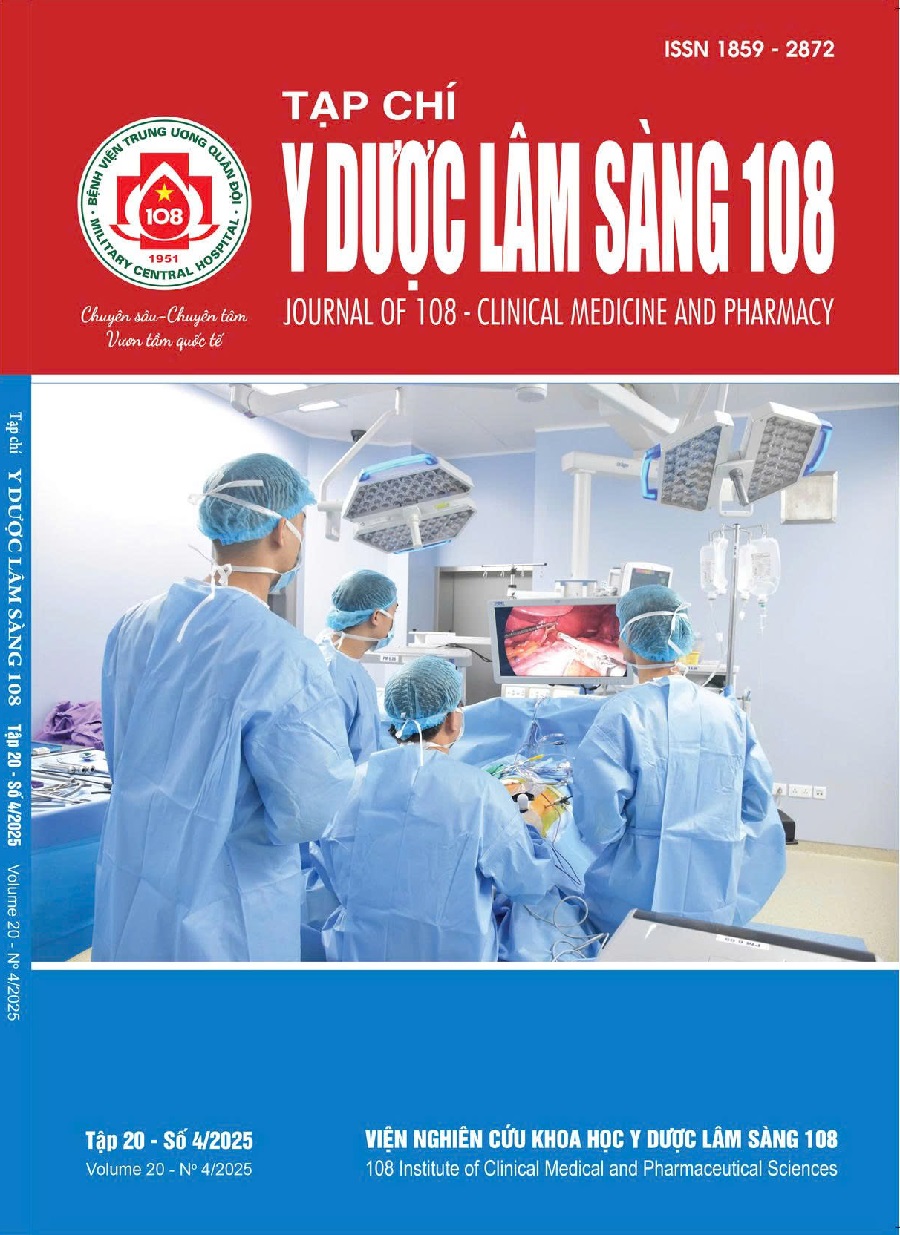Role of 131I SPECT/CT imaging in high-risk post-surgical patients with differentiated thyroid carcinoma
Main Article Content
Keywords
Abstract
Objective: To investigate whether 131I Single-Photon Emission Tomography/Computed Tomograpy (SPECT/CT) may have additional value over planar whole-body scan (WBS) in detecting residues and metastases in high-risk differentiated thyroid carcinoma (DTC) patients. Subject and method: 125 high-risk post-surgical DTC patients were enrolled in present study. All these DTC patients undewent 131I diagnostic and post-therapeutic 131I planar WBS and SPECT/CT. We compared and assigned an incremental value to SPECT/CT when it provided better identification and interpretation of the foci of 131I uptake, correct anatomic localization, precise differentiation between tumor lesions and physiologic uptake. Result: SPECT/CT confirmed all foci seen on planar WBS and localized an additional 24.2 % occult foci in thyroid remnant, cervical and mediastinal lymph nodes, lung metastases and physiological uptakes where WBS imaging not indentified. SPECT/CT findings allowed diagnostic changes in 3.2% to N1, 2.4 % to M1 stages and disease stages in 3.2%. Diagnostic 131I SPECT/CT modified therapeutic management in 27.2 % and 131I treatment doses in 37.6% of high-risk DTC patients. Conclusion: 131I SPECT/CT improved a higher number of DTC lesions, more precisely localizing compared to planar WBS imaging. Therefore, SPECT/CT could complement planar WBS in high and intermediate-risk post-surgical DTC patients.
Article Details
References
2. Mai Hồng Sơn, Lê Ngọc Hà (2018) Giá trị của xạ hình 131I SPECT/CT trong chẩn đoán giai đoạn ở bệnh nhân ung thư tuyến giáp thể biệt hóa. Tạp chí Y Dược lâm sàng 108. Tập 13-Số đặc biệt 7/2018, 68-75.
3. Haugen BR, Alexander EK, Bible KC et al (2016) 2015 American Thyroid Association Management Guidelines for Adult Patients with Thyroid Nodules and Differentiated Thyroid Cancer: The American Thyroid Association Guidelines Task Force on Thyroid Nodules and Differentiated Thyroid Cancer. Thyroid 26 (1): 1-133.
4. Lee SW (2017) SPECT/CT in the treatment of differentiated thyroid cancer. Nucl Med Mol Imaging 51(4): 297-303.
5. Gulec SA, Ahuja S, Avram AM et al (2021) A Joint Statement from the American Thyroid Association, the European Association of Nuclear Medicine, the European Thyroid Association, the Society of Nuclear Medicine and Molecular Imaging on Current Diagnostic and Theranostic Approaches in the Management of Thyroid Cancer. Thyroid® 31(7): 1009-1019.
6. Tuttle RM, Tala H, Shah J et al (2010) Estimating Risk of Recurrence in Differentiated Thyroid Cancer After Total Thyroidectomy and Radioactive Iodine Remnant Ablation: Using Response to Therapy Variables to Modify the Initial Risk Estimates Predicted by the New American Thyroid Association Staging System. Thyroid. 2010;20 (12):1341-1349.
7. Maruoka Y, Abe K, Baba S et al (2012) Incremental diagnostic value of SPECT/CT with 131I scintigraphy after radioiodine therapy in patients with well-differentiated thyroid carcinoma. Radiology 265 (3):902-909.
8. Grewal RK, Tuttle RM, Fox J et al (2010) The effect of posttherapy 131I SPECT/CT on risk classification and management of patients with differentiated thyroid cancer. J Nucl Med Off Publ Soc Nucl Med 51(9): 1361-1367.
9. Avram AM (2012) Radioiodine scintigraphy with SPECT/CT: An important diagnostic tool for thyroid cancer staging and risk stratification. J Nucl Med Off Publ Soc Nucl Med 53(5): 754-764.
10. Wong KK, Sisson JC, Koral KF, Frey KA, Avram AM. Staging of differentiated thyroid carcinoma using diagnostic 131I SPECT/CT. AJR Am J Roentgenol 195(3): 730-736.
 ISSN: 1859 - 2872
ISSN: 1859 - 2872
